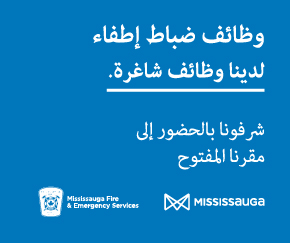اخبار العرب-كندا 24: الخميس 18 أبريل 2024 06:50 مساءً
Cathy Rice knows first hand about how inaccessible First Nations infrastructure can be.
"I live in a wheelchair. There's a certain perspective I have," said Rice, who is from Kahnawà:ke, south of Montreal, and is a board member of Connecting Horizons, a support group for individuals with disabilities, their families, and caregivers.
"Places where [they say] 'Yes, we're accessible,' and they're not ... or you can get in, but I can't use the washroom. Or it's got a wide door but I can't pull it open."
Last week, the Assembly of First Nations (AFN) released its Closing the Infrastructure Gap by 2030 report that estimates the federal government must invest $349.2 billion now to ensure First Nations have access to similar infrastructure to non-Indigenous communities by 2030.
The report estimates $1.6 billion is needed to address accessibility needs in First Nations, for retrofitting existing infrastructure to accommodate modern accessibility standards such as ramps, sidewalk let downs and railings for people with disabilities and elders.
The federal 2024 budget outlines over $9 billion in new funding for Indigenous Peoples across five years, including $918 million over five years dedicated to Indigenous housing and infrastructure.
More than ramps and railings
However, Connecting Horizons says making First Nations accessible is more than ramps and railings.
"Just in our own community, we know that there's a lot of improvements that can be made," said Iris Phillips, advocacy co-ordinator with the group.
"$1.6 [billion] is a fragment of what we could use."
Both Rice and Phillips gave the example of sidewalks in their community, some of which are inaccessible to wheelchair users due to large holes, cracks or obstructions like fire hydrants and utility poles. They said some community buildings have ramps, but aren't user friendly.
Story continues
The group works with community organizations to advocate for changes, but lack of funding has been a major barrier.
"We've done an informal survey that Cathy had started in 2009 just to touch base with the local organizations and their building managers to suggest upgrades," said Phillips.
"The barriers they face is the budget. We try and ask them can you consider for your next budget to put in new paint for stairs or new signage or to adjust your ramp. We always asked nicely if they could accommodate accessibility into their following year budget."
Proactive rather than reactive
Neil Belanger, chief executive officer of Indigenous Disability Canada and the British Columbia Aboriginal Network on Disability Society, said the AFN's estimate is "alarmingly low."
"It'd be a lot more than $1.6 billion, particularly when you look at communities that don't have sidewalks, social housing that's never been really built to be accessible," said Belanger.
"To make it accessible $1.6 billion is going to be light."
According to the national non-profit, the Indigenous population in Canada experiences a disability rate much higher than that of the general population, at approximately 30 to 35 per cent.
Neil Belanger is the executive director of the B.C. Aboriginal Network on Disability Society. (Submitted by Neil Belanger)
Belanger said First Nations leadership needs to be proactive rather than reactive when it comes to making communities accessible.
"Everything should be built with the idea of being accessible, accessible for members with disabilities," he said.
"I always ask the question, though, when it comes to disabilities and in addressing them within your community, are you proactive or reactive and 90 per cent of them are reactive."
He said he hopes the report puts pressure on the federal government to invest more.
تم ادراج الخبر والعهده على المصدر، الرجاء الكتابة الينا لاي توضبح - برجاء اخبارنا بريديا عن خروقات لحقوق النشر للغير






